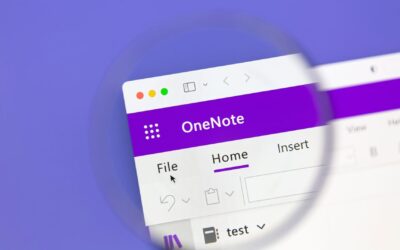Cloud CRM Tools Can Help You Build Better Customer Relationships. Is Your Cybersecurity Setup Ready for Them?
If your organization is considering a customer relationship management tool like HubSpot, Salesforce, or any of the hundreds of choices, you’re in good company. With the rise of remote work, companies are turning to Cloud CRM tools like never before, using cloud communication solutions to provide customers with reward-based deals and sophisticated customer portals. In fact, according to the latest data from Fortune Business Insights, the market for CRM tools is set to grow to $128.97 billion globally by 2028.
Gartner predicts that CRM cloud software will represent the largest single area of software for companies in the coming years. Why? Because everyone is using it. A recent survey by ZenDesk said 64 percent of the consumers signed onto a CRM tool when offered and found them helpful enough to use regularly.
CRM tools are becoming essential business tools. Let’s explore how cloud-based CRM services can transform your business and the steps you’ll need to implement them safely on your networks.
How Cloud-Based Communications Solutions Benefit Your Company
Cloud CRM tools are subscription-based, software-as-a-service (SaaS) tools that allow you to store information about your customers and prospects and manage your relationship with them throughout the lifecycle. What does this mean? It means you can track all your interactions with these customers—what marketing programs they’ve received, what salespeople have called them, and information about their product preferences. Once they become customers, you can track service calls and keep everything about their transactions in one central location accessible by sales, marketing, and the client.
Choices for CRM platforms abound, and those platforms generally have numerous plug-ins and APIs available to help you extend their functionality. Companies love CRM because it allows for greater sophistication in dealing with clients. Clients love them because it provides all their account information at their fingertips. When used well by both parties, CRM can improve productivity and transparency exponentially.
What Cloud-Based CRM Services Provide
Customer management solutions can provide a whole host of benefits for your company, including:
- Better, More Transparent Customer Service—with customer service portals that put all transactions at their fingertips, allowing them to submit service tickets.
- Opportunities to Upsell Existing Clients—by sharing a customer’s journey with the entire sales and service team. Clients can be categorized and targeted for upgrades. Sales messaging is customizable, so clients don’t get spammed with irrelevant sales pitches.
- Improved Customer Retention—because customers are more invested and enabled to communicate more readily with your team.
- Detailed Sales and Performance Analytics can unify sales, marketing, and executive management.
- Better Segmentation/Management of your Prospect Funnel—to help you move prospects down the sales funnel and create contact priority lists for sales.
- Automation of Repetitive Tasks—CRM tools are versatile and can be customized to create self-service interfaces for customers that reduce your billing and reporting admin.
Opportunities abound with the cloud-based communications solutions CRM can offer. But as promising as they are, there are many potential security and operational pitfalls from installing them too quickly. Fortunately, a little planning will prevent problems. Here’s some of our best advice on implementing a CRM solution in your business, with nary a misstep.
The Questions You Need to Ask Before You Buy Cloud CRM Tools
The biggest key to making a CRM tool work for you is planning. A good managed service provider, your internal IT department—or ideally, both—should be deeply involved in any purchase process for a cloud-based communication service.
Why? Because these tools will extract data from your existing databases to operate. They may also be pushing data outside the tool, as well. And every data record in transit is an opportunity for cybersecurity risk.
You can keep yourself safe and avoid buying the wrong cloud technology by doing your due diligence.
Here are the questions you should ask before investing in your next CRM tool.
Can Multi-Factor Authentication Be Used for Logins?
This is a critical question because relying on a simple password is not enough to ensure your cybersecurity these days. It’s too easy for hackers to steal passwords, buy them off the dark web, or guess them through brute force attacks. Once inside your CRM, a hacker can do enormous damage, tap into critical dataflows, and potentially steal banking information.
It would help if you had a cloud communication solution that asks for a secondary login, whether that’s a fingerprint, a second sign-in through an app like Duo, or a passwordless system that steps through cyber-secure authentications. In our opinion, any cloud solution without these protections is a poor investment.
How Can We Make this Usable for Mobile Environments?
In today’s mobile work culture, workers must be able to shift their time around their personal schedules and work from anywhere. Does your CRM have a workable mobile interface? Is that accessed through a phone’s web browser or an app? Does that app have notifications? How often does it ask for sign-ins? Does the mobile version offer a good user experience? Does data flow readily from the web-based version to the mobile version? And perhaps most important, does the mobile version serve an essential purpose for your internal staff and your customers?
Do extensive testing before you launch. And if the cloud-based CRM isn’t meeting your needs, don’t worry. Most of the major players in the CRM space have a wealth of plug-ins that can address most, if not all, of your needs. If there’s no plug-in available, your CRM vendor or MSP can usually engineer a custom solution. Just ask.
Are We Backing up Our Data? And How Compatible Will that Backup Be with our Existing Systems?
Your backup strategy is just as important as the solution you choose. Most CRMs will offer some form of backup within the tool. But it’s usually not enough. Why? You won’t have coverage for much of your data in many instances.
For instance, if a user accidentally deletes data, there’s usually no available recovery. Many don’t protect against ransomware, malware, or any defense against malicious users. And the backup isn’t always integrated with your other backup systems. So, in the event of a system-wide hack, you’ll have two backup protocols to manage. Fortunately, many systems are designed explicitly as additional cloud-based backups for your cloud-based CRM services. A good MSP can help you find the right one for you.
Who Owns the Program Internally?
Who’s monitoring the data going into and out of your CRM? Whose budget pays for the subscription fees and consulting services? Who are the audiences that will be using the tool? How many seats will you need to buy? Who will serve as administrator? Who handles submitted service tickets when something goes wrong? And how will this CRM be dovetailed into your existing systems? Who, within your organization, will be your IT contact? It’s helpful to answer these practical questions before you purchase your tool. Once your team is assembled, they can ask all the hard questions and ensure no details are missed when you make a migration and onboarding plan.
How Will We Handle Training, So Everyone Can Use the Tool?
Training is one of those areas where most sophisticated CRMs excel. Larger CRMs like HubSpot, for instance, have extensive online training programs and even offer accreditations. Look for these, in addition to a large user community online. Here’s where you’ll learn the finer points of making the most of your Cloud CRM tools.
However, it’s not enough to point your users toward canned offerings and leave them to their own devices. Your internal people should take the same training classes at the same time. And as for your customers, it’s well worth your time to produce short training videos that walk them specifically through your branded interfaces. Or, if the interface is complex, sending out one of your resource experts to train them personally is not a bad idea.
How Do We Assign Values and Security Levels to the Data in the Tools?
Some data in your tool will be more sensitive than others. It may not be necessary to have high-level security protocols for every piece of data. Security systems, after all, are set to offer alarms and alerts. Placing a high level of protection on everything could lead to too many alerts. So, it’s essential to understand precisely how the protections around your data work.
What data is being monitored through your tool, and what is being monitored through your existing cybersecurity operation? Once you understand this, you’ll be able to consider whether your data is separated into differing security and monitoring levels. There’s no set answer to this, as the answer will be different for every organization. This is a meaningful conversation to have with your CRM vendor and your MSP/IT department before you begin.
What Reporting Needs Do We Have?
For most users of CRM tools, reporting is critical to maintaining key performance indicators for their organization. While many companies can be okay with accessing reports inside the tool, others will want that reporting data exported into other systems. Talk this over with your MSP. There may be plug-ins or customizations to meet your reporting needs. Talk them over at the outset, and you can be sure to merchandise the usefulness of your cloud communications solutions to the rest of your organization from the very beginning.
Implementing Cloud-Based Communications Solutions: The Next Step
Are you ready to explore Cloud CRM tools for your organization? Integris can help. Contact us today for a free consultation, and we can get you started on the path to a great CRM integration.



